History
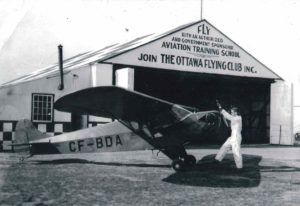 The Ottawa Flying Club – eastern Canada’s oldest flying club – has been in continuous operation since 1928 and represents a history of aviation accomplishment and an ongoing romance with flight. From the early days when a group of aviators – dressed in goggles, leather helmets and boots – met at the sand flats beside the scenic Rideau River on a grassy field identified only with a solitary wind sock, the Club has come to symbolize the ongoing romance with flight.
The Ottawa Flying Club – eastern Canada’s oldest flying club – has been in continuous operation since 1928 and represents a history of aviation accomplishment and an ongoing romance with flight. From the early days when a group of aviators – dressed in goggles, leather helmets and boots – met at the sand flats beside the scenic Rideau River on a grassy field identified only with a solitary wind sock, the Club has come to symbolize the ongoing romance with flight.
Over the next 70 years, our club’s growth has paralleled the growth of aviation itself: a growth which has seen the venerable aircraft of the twenties replaced by the jumbos and supersonics of today, and the open cockpits, ragwings and shouts of ‘contact’ by enclosed cabins, metal wings and tower clearances.
Early History
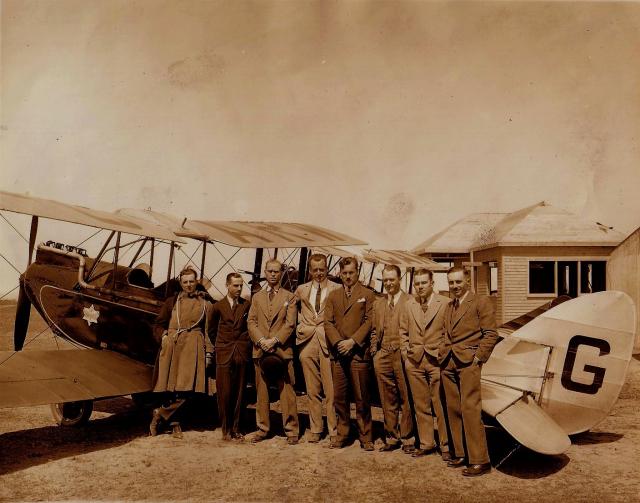 The Ottawa Flying Club was founded and incorporated by a Federal letters patent in 1928. Less than a year later, Charles Lindbergh visited the Club in the original Spirit of St. Louis following his historic west to east trans Atlantic flight. The airfield was later renamed Lindbergh Field in remembrance of this visit.
The Ottawa Flying Club was founded and incorporated by a Federal letters patent in 1928. Less than a year later, Charles Lindbergh visited the Club in the original Spirit of St. Louis following his historic west to east trans Atlantic flight. The airfield was later renamed Lindbergh Field in remembrance of this visit.
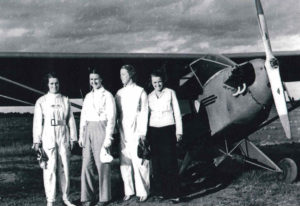 The Club’s first home was an old, two-story, white clapboard house located on the east side of what is now PAPA taxiway.
The Club’s first home was an old, two-story, white clapboard house located on the east side of what is now PAPA taxiway.
At the time, club members and students were flying Avro Avians, powered by the Genet engines, purchased from the Ottawa Car Company, which made street cars for the City of Ottawa (the name was changed to the Ottawa Car and Aircraft Company during World War II, and they made bomb bay doors for the Avro Lancasters, gun blisters for the Consolidated PBYs, etc).
World War II
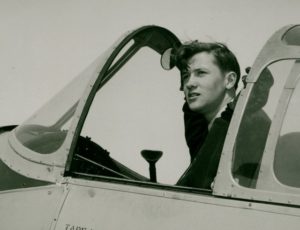 During the war, the Club was temporarily re-located to Quyon, Quebec and operated out of a number of fields near Ottawa.
During the war, the Club was temporarily re-located to Quyon, Quebec and operated out of a number of fields near Ottawa.
At the time, the Club was an active participant in the Commonwealth Air Training Programme (officially known as BCATP – the British Commonwealth Air Training Plan), where “ab-initio” and navigation training was provided to prospective military pilots.
Following the war, the Flying Club was relocated back to Uplands, and the original Club was used until late 1947. At that time, the Club was moved to the RCAF Control Tower and the adjacent hangar, where it remained until 1951. It was then moved to a lean-to attached to a hangar east of the Control Tower. By this time, the original Tiger Moths had been replaced by Fleet Canucks, Aeroncas and Stinsons.
Recent
In the 1950’s, the Club was relocated to its present location where a small but modern clubhouse was built. By the early 1970’s, student enrolment and club membership exceeded 600 and club fleet was grown to include a dozen Cessna aircraft. In 1978, construction was completed on a 60 x 80 foot modern metal hangar, large enough to house 8 aircraft. This hangar allowed the Flying Club to build full maintenance and inspection facilities.
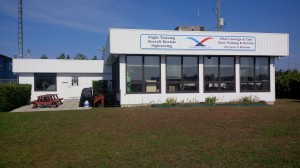 In 1987, the original clubhouse was expanded and modernized, the current lounge (with an excellent view of the airport) was built.
In 1987, the original clubhouse was expanded and modernized, the current lounge (with an excellent view of the airport) was built.
The club supported a large group of members and flight rates in the mid-eighties and early nineties were very high. Fortunes changed around 2002 and 2003 when the Airport imposed landing fees on aircraft and a large number of members sadly left the club. The Board of Directors at the time undertook an ambitious plan to partner with Algonquin College and so the Aviation Management Program was born and the fortunes of the club were revived. Since 2006, OFC has supported Algonquin College by providing flight training and ground instruction for the Aviation Management Program. With the initial classes on just a few students, the program has grown to intakes of between 15 and 40 students every year.
The Club continues to perform well and looks forward to future challenges in support of the members and Algonquin College.
